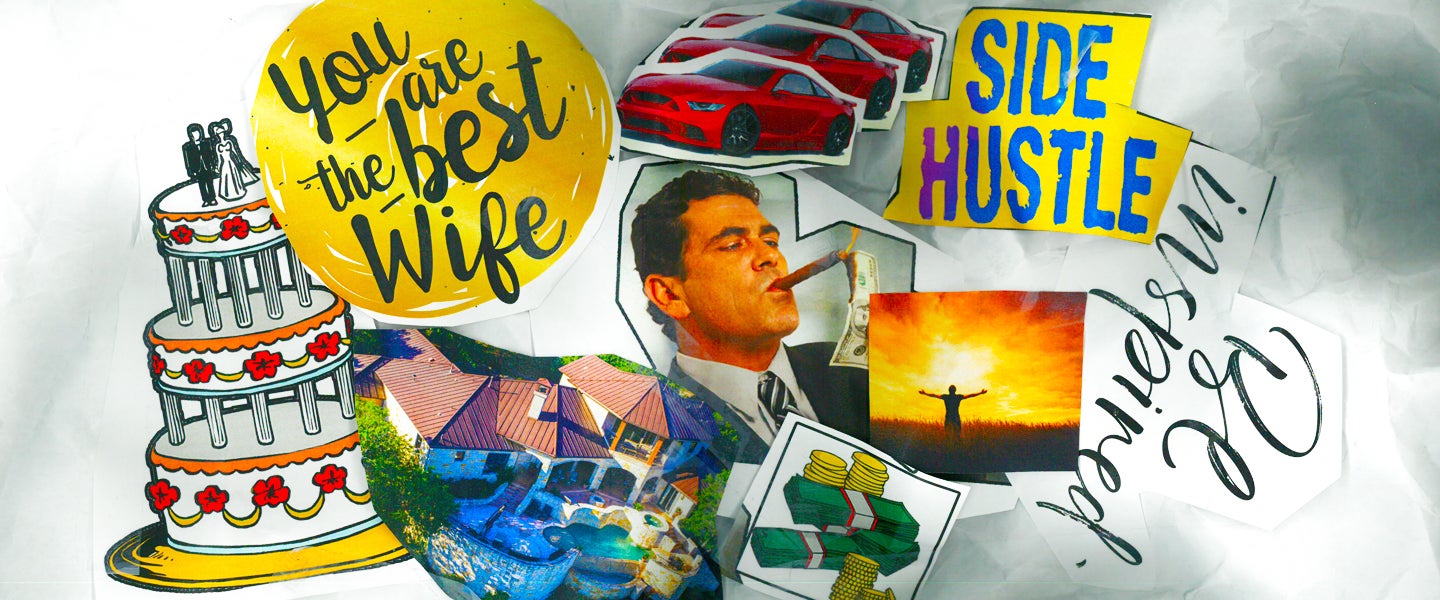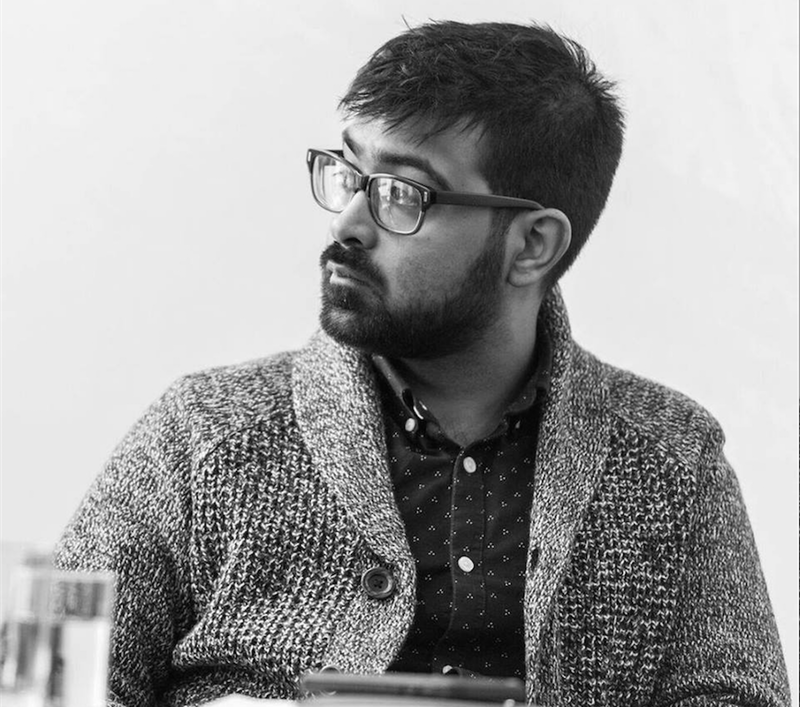I need a productivity app for all my productivity apps. Or at least I’ve never found one that helps me get my shit together enough to meet deadlines, drink a sufficient amount of water and meditate and/or sleep soundly with any kind of regularity. And I’ve tried them all: Evernote and Habitica for work, Focus Keeper for time management and Sleep Cycle for (you guessed it) a perfectly optimized night of zzzs.
Thus, I’m contemplating becoming a Vision Board Bro.
Because you’re living and breathing in the 21st century, you’re likely to have come across vision boarding in some form or fashion. In the office, you might use Trello, a productivity app that incorporates images and video, or Monday.com. Over on YouTube, there are countless guides on how to create scrapbook-style vision boards as well as a whole genre of “manifestation stories,” where people claim to have achieved their professional, personal and even romantic goals via vision board. Meanwhile, Pinterest is the essential vision board — known for dream vacation destinations, motivational quotes and DIY projects. The same goes for Instagram’s grid layout, which also conveniently allows users to “visualize” their desires, goals and wishes. For instance:
Typically, of course, these platforms are associated with women. But a dedicated brigade of Vision Board Bros is growing.
“I found out about vision boards on YouTube, when I was looking for something that wasn’t numbers-based,” says Martin Young, a 28-year-old design engineer in the U.K. Young found, as I did, that despite trying every organizational method in the book (or App Store) — from to-do lists and timers to elaborate, multi-synced calendar apps — none was able to keep him on track. “I’d get to the end of the week, and I’d have more work due than when I started,” he tells me. “It was overwhelming, and it affected all my familial and social relationships.”
Last year, though, Young watched a video from Clark Kegley, a YouTuber who makes videos about entrepreneurship and personal finance. The video described how to create a vision board digitally, which in Kegley’s case mixed professional goals (e.g., getting another 5,000 subscribers before the end of 2018) with personal ones (e.g., moving abroad and having at least five children). “Traditionally, it’s women who make vision boards,” Kegley says in the video. “But if you’re a dude watching this, it’s super-powerful and will help you. Don’t let the pink scare you away, bro!”
All that pink certainly didn’t scare Young. At the beginning of the year, he created a digital vision board that includes imagery related to his goal of setting up his own company, a Spanish flag reflecting his desire to move to Madrid, and Tom Hardy working out while training for Warrior to capture the body he wants. “Nothing on my vision board was a new goal,” Young tells me. “But it was the first time I saw everything together in one place — my work goals, personal goals and the kind of life I eventually want.”
Young believes that by looking at his vision board every day first thing in the morning and right before he goes to sleep, it’s helped him go to the gym at least four times a week, to be more efficient at the office so he doesn’t work late and to do more with his free time than sleep and binge-watch Netflix.
“Before, I kept everything in different notebooks or apps,” he explains. “So I’d have all my fitness goals there, and all my work goals somewhere else. Now I can see how everything fits together. I know that working out in the morning will help me feel better, so I can work better. And if I can work without getting distracted or tired, I can finish earlier and spend time with my girlfriend and build the life I want to have with her.”
Not surprisingly, though, Vision Board Bros like Young (and probably me, too) aren’t using their boards as originally intended by vision board pioneers. That is, their power is more ethereal, and not necessarily a productivity mechanism. “Vision boards make a great physical motivational force,” writes Tranelle Maner at Her Campus. She relates them to “the law of attraction,” or the idea that people have the ability to attract into their lives whatever they’re focusing on (or more or less the premise of The Secret). “Vision boards and why speaking things into existence generally works is because you’re actively reminding yourself of your goals,” she explains.
Case in point: Twenty-two-year-old Steph Cherona from Nairobi, Kenya. She tells me over Skype that her vision board is a place she goes to for clarity and peace of mind. “I have my goals on the board — and my hopes and wishes, too,” she says. “Some of the hope is to God. I ask him to help me be a better Christian. There’re also wishes to go visit America and to be married soon.”
But unlike Young, Cherona sees her board as something to aspire to as opposed to something to accomplish. After all, she says, she isn’t in a financial position to make plans for all her goals, let alone complete them within a rigorous time frame. Not to mention, there are parts of her board that no amount of planning or scheduling will guarantee — namely, the health of her family or the lavish wedding she’s dreamt of since she was a child. “For these things, I pray for them!” she laughs. And short of that, she hopes to “speak them into existence.”
Most psychologists say there’s little evidence to suggest that vision boards actually work. But that hasn’t stopped vision-board believers — the originals and Vision Board Bros — from planning vision-board-centric New Year’s parties.
It will definitely be my resolution — if only to finally make all my other ones a reality.

